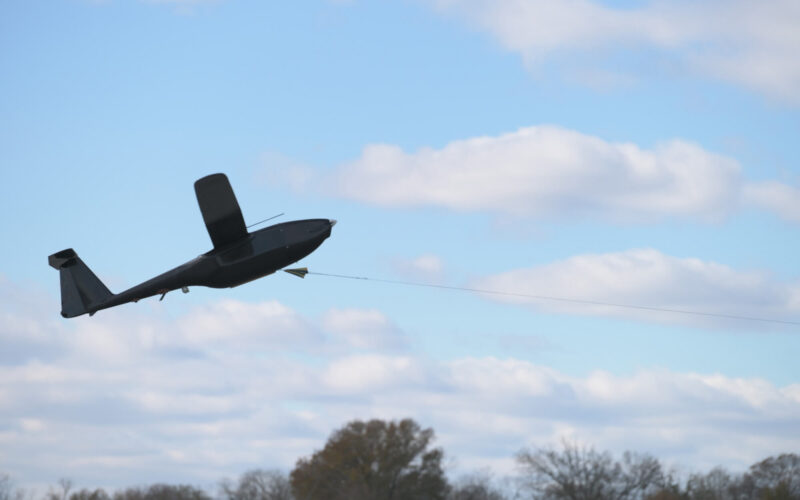The United States Naval Research Laboratory (NRL) unveiled the first results of the experiments carried out on the Hybrid Tiger, a tactical drone running on hydrogen and solar energy.
The experiment took place in November 2020, at Aberdeen Proving Grounds in Maryland, United States. The aircraft remained airborne over 24 hours without external assistance.
The feat was made possible through a combination of energy solutions. The wings of the drone are fitted with light solar panels. The aircraft also carries a fuel cell with a 50-liter cryogenic liquid hydrogen tank, capable of taking over during the night. The switch between the two is made seamlessly thanks to an onboard computer. Even more impressively, the drone can also use meteorological data to glide using air currents and updrafts, allowing it to fly for over 110 kilometers without using its propeller.
The Hybrid Tiger is the successor of the Ion Tiger, another hydrogen fuel cell drone developed by the US Navy which managed to stay airborne for 48 hours. The NRL hopes the Hybrid Tiger will eventually be capable of flying for more than two days and cover more than 1,800 kilometers on a single charge. That capacity should be tested during Spring 2021.
“Extrapolating the flight endurance of Hybrid Tiger from the recent flight data suggests it can reach the program goal flight endurance,” explained Richard Stroman, a mechanical engineer from the NRL Chemistry Division. “The flight was effectively a performance test in worst-case conditions: temperatures falling below zero degrees Celsius, winds gusting to 20 knots, and relatively little solar energy as we approached the solar solstice. Despite all of that, Hybrid Tiger performed well.”
Eventually, the Hybrid Tiger will be fitted with a small intelligence, surveillance, and reconnaissance payload, allowing it to monitor an area of interest for several days. Additionally to the improved endurance, the use of hydrogen power reduces noise and heat compared to drones using conventional power, making it less detectable.
The US Navy is not the only one interested in powering military drones with hydrogen. In February 2021, the French Air Force said it would also study the potential of a drone powered by hydrogen, and particularly the challenges of using that technology in the field.

